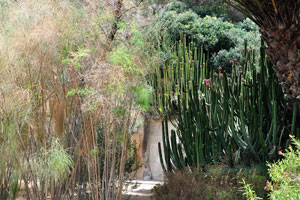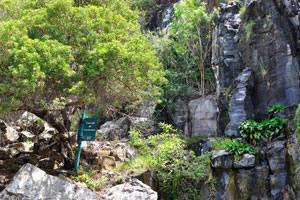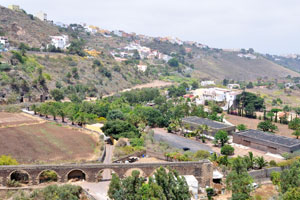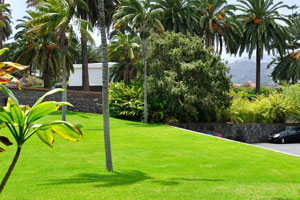Botanical Garden Viera y Clavijo Spain “Jardín Botánico Canario Viera y Clavijo” botanical garden is located in the northeast of Gran Canaria, in Tafira Alta, approximately 7 kilometers southwest of the capital city Las Palmas. The botanical garden was established in 1952 by the Swede Eric Sventenius, who remained its director until his death in 1973. Most of the botanical garden is laid out along a steeply sloping side of the Barranco de Guiniguada, which at one point can be crossed on a wooden bridge to reach the flatter areas. Cobbled paths leading down in steps past caves and cascades make it not the most disabled-friendly of destinations. Named after José de Viera y Clavijo, the author of the Canarian Natural History Dictionary, this botanical garden focuses on flowers and plants endemic to the seven islands of the archipelago, inclusive of the islands belonging to the so-called Macaronesia, Madeira, the Azores and Cape Verde. Set on terraces and growing in their natural environment, the botanical garden accords each species their own space. Just past the main entrance you will find a mini laurisilva (Laurel Forest), which originally covered the island in pre-Hispanic times but which was later destroyed completely. Entering from the Dragonal road, you’ll first encounter the Plaza de las Palmeras featuring the Canary Island Date Palm found on all islands of the archipelago.
Jardín Botánico Canario Viera y Clavijo
Address:
Ctra. del Centro, Km 7 ,
Las Palmas de Gran Canaria, Spain
“ES ”
35017 .
Hours:
Mon-Sun 9:00am-6:00pm .
Here is our
Map
,
phone:
+34 928 21 95 80 .
Latitude: 28 deg 3 min 48.96 sec N ,
Longitude: 15 deg 27 min 47.88 sec W .
Waterfall
The waterfall
Kois Lake
The Wooden bridge
Günther Kunkel & Mary Ann Kunkel
The Wooden bridge
The statue of Eric Ragnor Sventenius
Bust of José de Viera y Clavijo
The Windy Archway











































































































































































































































































































































































































































































